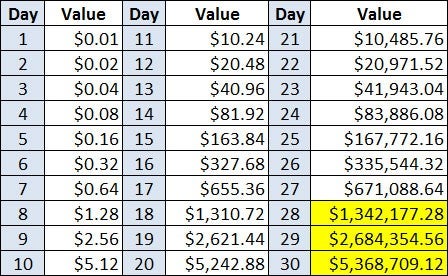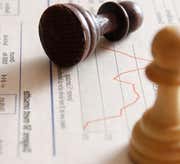|

|
Many people invest in dividend-paying stocks to take advantage of the steady payments and the opportunity to reinvest the dividends to purchase additional shares of stock. Since many dividend-paying stocks represent companies that are considered financially stable and mature, the stock prices of these companies may steadily increase over time while shareholders enjoy periodic dividend payments – a win-win for investors. In addition, these well-established companies often raise dividends over time. For example, Coca-Cola paid a $1.40 dividend in 2016 and $1.48 in 2017. While there are no guarantees, a company that has earned a reputation for delivering reliable dividends that increase over time (like Coca-Cola has) is going to work hard not to disappoint investors.
A company that pays consistent, rising dividends is likely a financially healthy firm that generates consistent cash flow – this cash is where the dividends come from, after all. These companies are often stable and their stock prices tend to be less volatile than the market in general. As such, they may be lower risk than companies that don’t pay dividends and that have more volatile price movements.
Because many dividend-paying stocks are lower risk, they make an appealing investment for both younger people looking for a way to generate wealth over the long haul and older adults who want to build a steady income flow during retirement.
How to Buy Dividend Stocks
Buying dividend stocks is the same as buying any other kind of stock (growth stocks, for example). First, you have to open a brokerage account with an online broker and fund the account. Second, you need to research the kinds of companies that pay a dividend and are considered reliable in their payments. Many online stockbrokers offer tools like screeners that will help you easily find stocks that pay a high dividend.
The Power of Compounding
Dividends often provide investors with the opportunity to take advantage of the power of compounding. Compounding happens when you generate earnings and reinvest them, eventually generating earnings from the earnings. Dividend compounding occurs when dividends are reinvested to purchase additional shares of stock, resulting in greater dividends. (To learn more, read Understanding the Power of Compound Interest.)
To illustrate the power of compounding, assume someone asks you if you would rather be given $1,000,000 today, or be given one penny that would double in value every day for 30 days. At first glance, it seems like the $1,000,000 would be the better choice. Some number crunching, however, proves you’d be better off taking the penny and watching it grow for 30 days, as shown in the following table:

Figure 3: This figure provides an exaggerated illustration of the power of compounding. If you start with a penny on day one and double your “account” each day, you would be a millionaire within 28 days.
As Figure 3 shows, the first couple weeks are pretty uneventful and it may seem impossible that one penny could grow significantly. Eventually, however, your “earnings” really start to take off, and by day 28 you would already have more than $1,000,000. Is this example realistic? No, not at all. While you might be able to double your money every day for the first couple of weeks, it’s unrealistic to assume you could earn (or otherwise contribute) tens or hundreds of thousands of dollars each day after the first three weeks.
While this is not an example of how your money can actually grow, it serves to illustrate that, given time, money can grow, especially if earnings are reinvested. This is the power of compounding, called by Albert Einstein “the eighth wonder of the world.”
Reinvesting Your Dividends
To take advantage of the power of compounding as a dividend investor, you need four things:
- An initial investment
- Earnings – a.k.a. dividends
- To reinvest those earnings
- Time
With dividend investing, the more often you receive and reinvest your dividends, the higher your eventual rate of return. To illustrate a more realistic example of compounding, assume you buy 100 shares of Coca-Cola at $50 per share, for a total investment of $5,000. The first year you own the stock, it pays an annual dividend of $1.50, earning you $150 in dividend income. If the dividend increases by 5% each year (5% of the previous dividend; not 5% of the stock’s value), your $5,000 investment would be valued at $13,776 after 20 years, assuming no change in the stock price and that you reinvested all dividends. (For further reading, see How to Reinvest Dividends.)
Dividend Reinvestment Plans – DRIPs
A dividend reinvestment plan (DRIP) is a plan offered by a company that allows investors to automatically reinvest cash dividends by purchasing additional shares or fractional shares on the dividend payment date. This can be an excellent way to take advantage of the compounding potential. Instead of receiving your quarterly dividend check, the entity managing the DRIP (which could be the company, a transfer agent or a brokerage firm) puts the money directly towards the purchase of addition shares.
Many DRIPs let you buy the additional shares commission-free and even at a discount to the current share price. DRIPs that are operated by the company itself, for example, are commission-free since no broker is involved. Certain DRIPs extend the offer to shareholders to buy additional shares in cash, directly from the company, at a discount that can be anywhere from 1 to 10%. Because of the discount and commission-free structure, the cost basis of shares acquired this way can be significantly lower than if bought outside of the DRIP. (For more, read The Perks of Dividend Reinvestment Plans.)
From the company’s standpoint, DRIPs may be attractive because the DRIP shares can be sold directly by the company – and not through an exchange. This means that the proceeds from the stock sale can be reinvested into the company. DRIPs can also allow companies to raise new equity capital over time while reducing the cash outflows that would be otherwise by required by dividend payments. Additionally, DRIPs tend to attract shareholders with long-term investment strategies – and these investors may be more willing to “ride out” any rough periods.
From an investor’s perspective, DRIPs offer a convenient way to reinvest. The primary disadvantage to shareholders is that they must pay taxes on the cash dividends reinvested in the company even though they never receive any cash. (For a closer look, see 5 Ways to Lose Money With a Dividend Reinvestment Plan.)
Introduction To Dividends: Doing Your Homework And Taxes
-
 Investing
InvestingHow Dividend Reinvestment Grows Your Money Faster
Dividend reinvestment is a smart strategy for growing your investments faster over the long term, but it’s not a get-rich-quick proposition. -
 Investing
InvestingHow to Reinvest Dividends from ETFs
Learn about reinvesting ETF dividends, including the benefits and drawbacks of dividend reinvestment plans (DRIPs) and manual reinvestment. -
 Investing
InvestingThe Perks Of Dividend Reinvestment Plans
Dividend Reinvestment Plans (DRIPs) offer shareholders a way to purchase additional shares in top companies without the commissions. Learn more on the characteristics of DRIPs and how it affects ... -
 Investing
InvestingWhy Dividends Matter To Investors
There is much evidence as to why dividends matter for investors, profitability in the form of a dividend check can help investors sleep easily. Learn more. -
 Investing
InvestingHow Dividends Affect Stock Prices
Find out how dividends affect the underlying stock's price, the role of market psychology, and how to predict price changes after dividend declarations. -
 Investing
InvestingThe 3 Biggest Misconceptions of Dividend Stocks
Learn about three dividend stock misconceptions and how to avoid them for greater gains. -
 Investing
InvestingDividend facts you may not know
Dividends are one way in which companies "share the wealth" generated from running the business. Discover the issues that complicate these payouts for investors. -
 Financial Advisor
Financial AdvisorHow to Pick the Best Dividend Stocks
Here's how dividend stocks can make you rich, but you have to be patient. -
 Investing
InvestingHow to Live Off Your Dividends
One way to enhance your retirement income is to invest in dividend-paying stocks and mutual funds.


